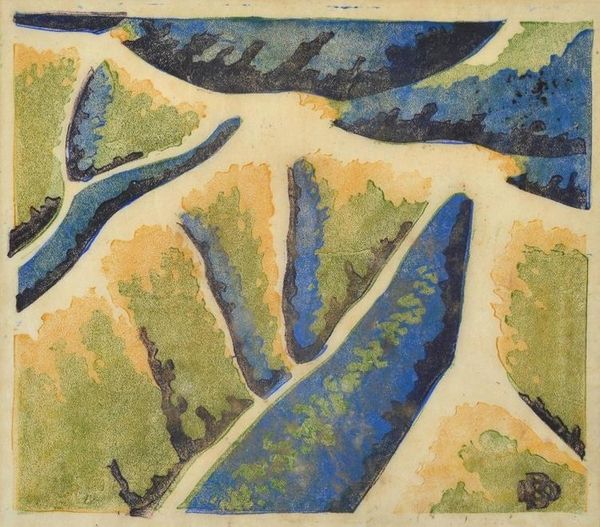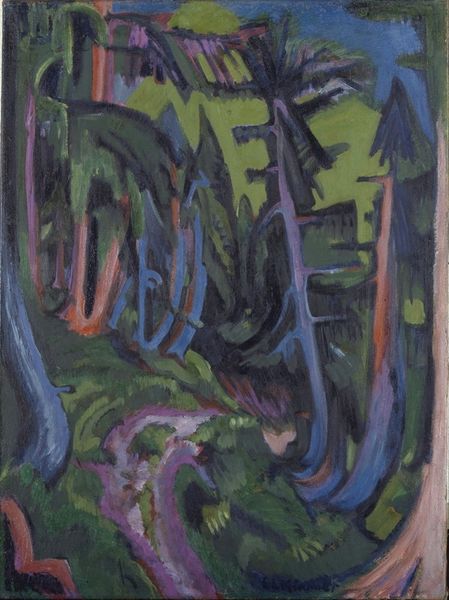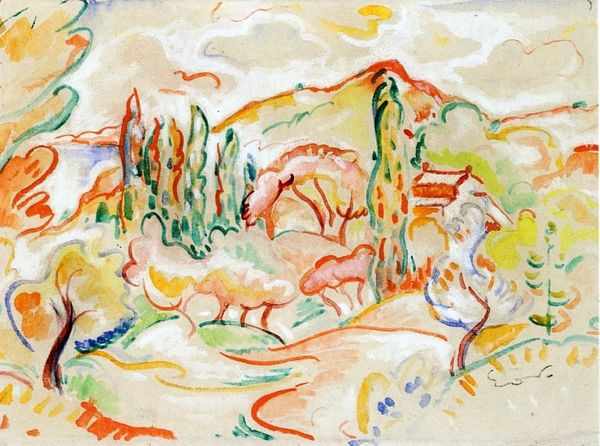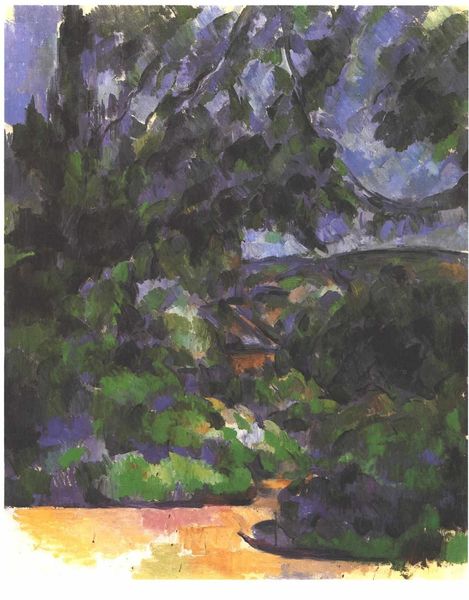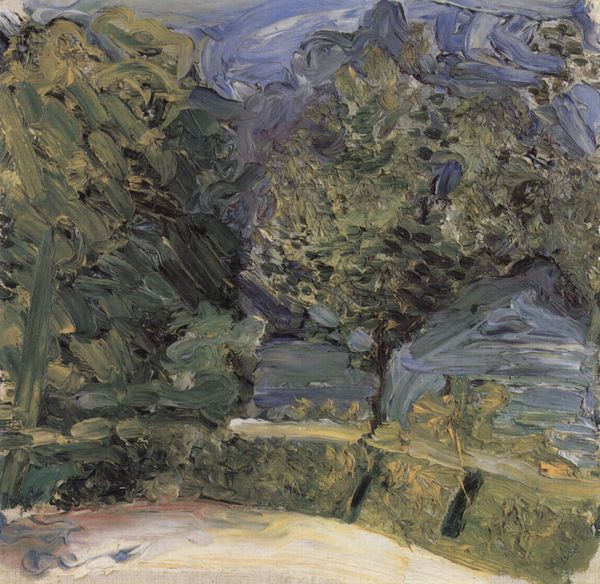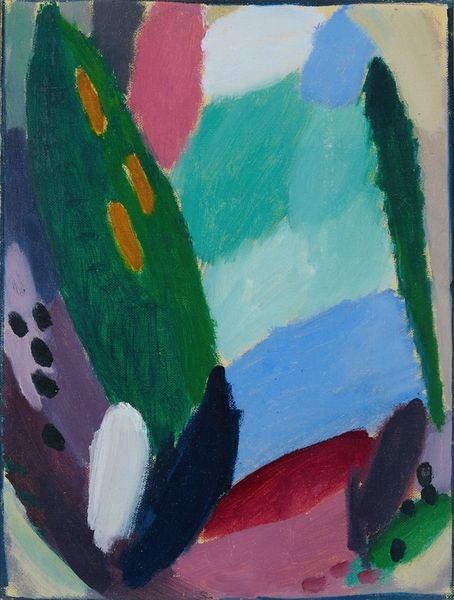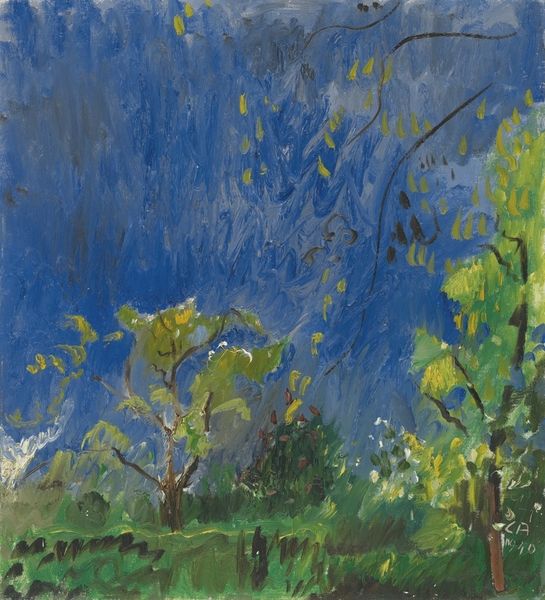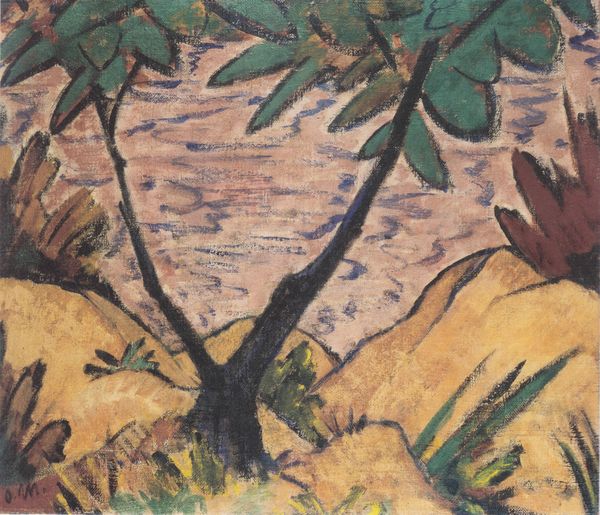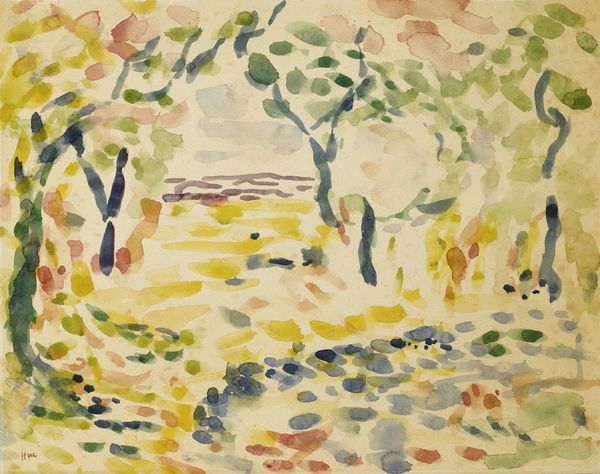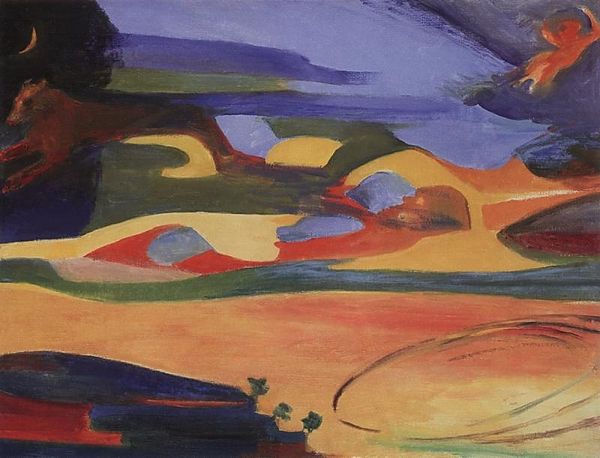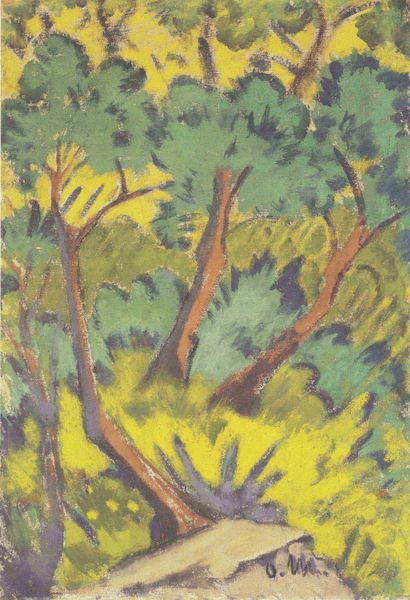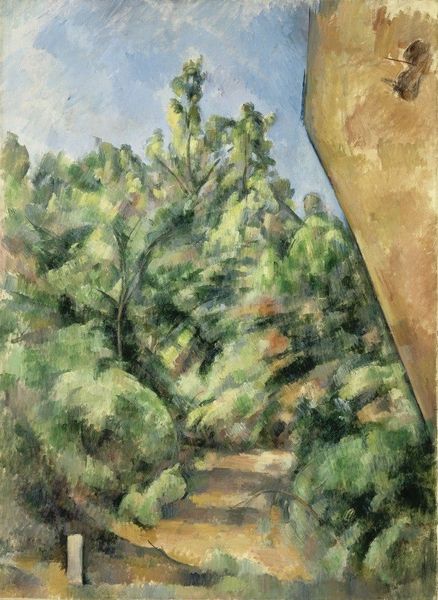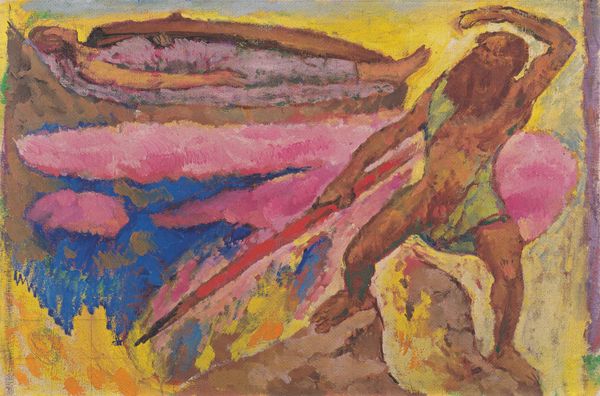
painting, plein-air, oil-paint, impasto
#
painting
#
plein-air
#
oil-paint
#
landscape
#
german-expressionism
#
oil painting
#
impasto
#
expressionism
Copyright: Public Domain: Artvee
Curator: Ernst Ludwig Kirchner's "Bay on the Coast of Fehmarn," painted in 1913, presents a compelling scene. What's your immediate impression? Editor: A churning unease. The colors vibrate against each other; it’s not a comforting seascape, more like a prelude to a storm, wouldn’t you say? The stark yellows slicing through the blue create an almost jarring visual rhythm. Curator: Precisely. That disquiet is inherent to German Expressionism. Look at the application of the oil paint—heavy impasto, each stroke loaded with emotion. Notice how the lines are jagged, almost violent in their application. This isn't simply a representation of a landscape; it’s the embodiment of a feeling about that landscape. Editor: Those yellows in the water aren't naturalistic; they feel like sickness. The coastal landscape traditionally signifies freedom, escape. But here? Those clashing yellows against the subdued blues subvert this established iconographic tradition, creating something much more psychological. The sea becomes a place of turmoil. Curator: The simplification of forms is crucial too. Trees are merely gestural marks, the cliffs reduced to angular planes. There’s an economy of detail, yet it manages to convey a density of sensation. Editor: The overall composition is worth exploring. See how the diagonal sweep of the coastline forces your gaze upwards and into the distance, only to be blocked by the solid mass of the headland? Trapped energy—leading the viewer not to any sense of liberation, but only to a darker realization. Curator: One might consider how the period, right before the outbreak of the First World War, may have informed his perception. It's quite hard to miss the anticipation of that oncoming chaos in a work like this. Editor: Indeed. This painting, ostensibly a peaceful coastal scene, becomes a potent symbol of cultural anxieties. Thank you; I'll never look at a beach the same way again. Curator: The expressive use of color, texture, and line is really the heart of the painting. Appreciating how Kirchner departs from representation leads to more discoveries each time you look at the image.
Comments
No comments
Be the first to comment and join the conversation on the ultimate creative platform.
